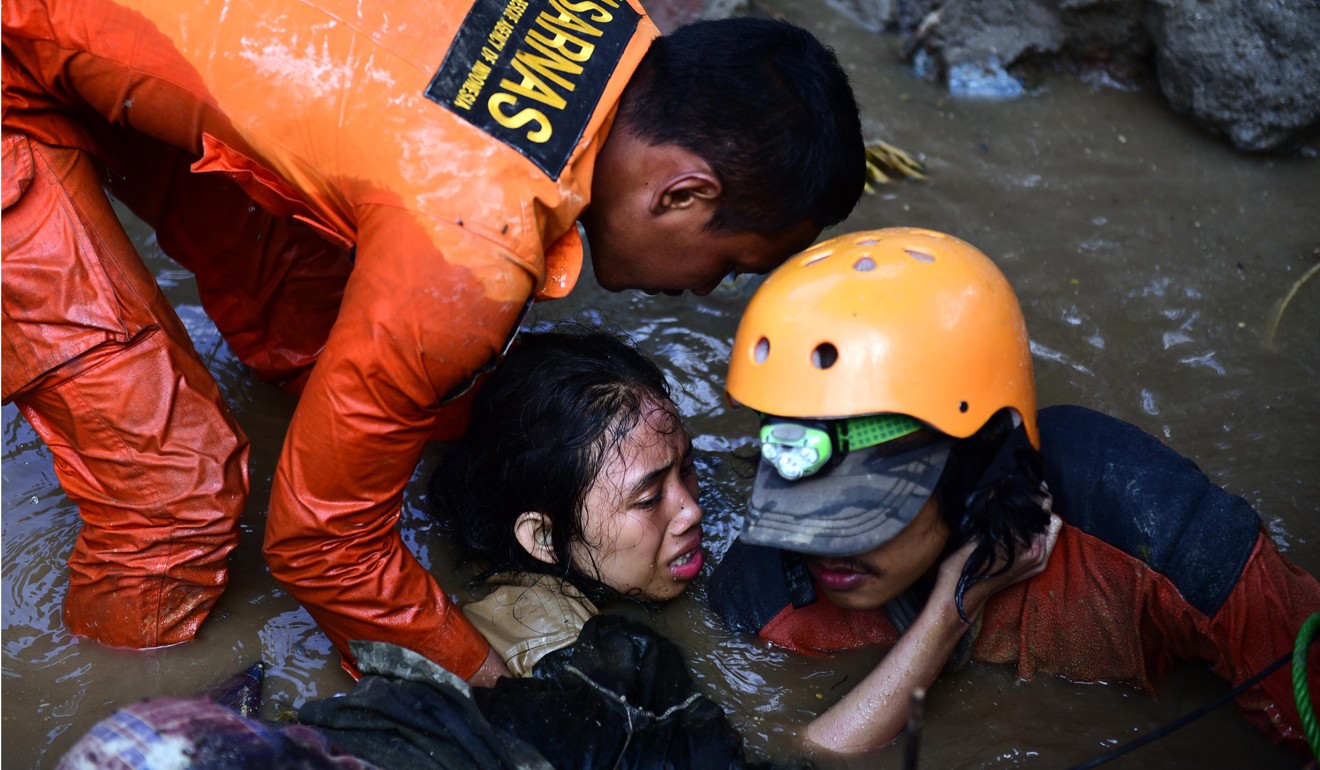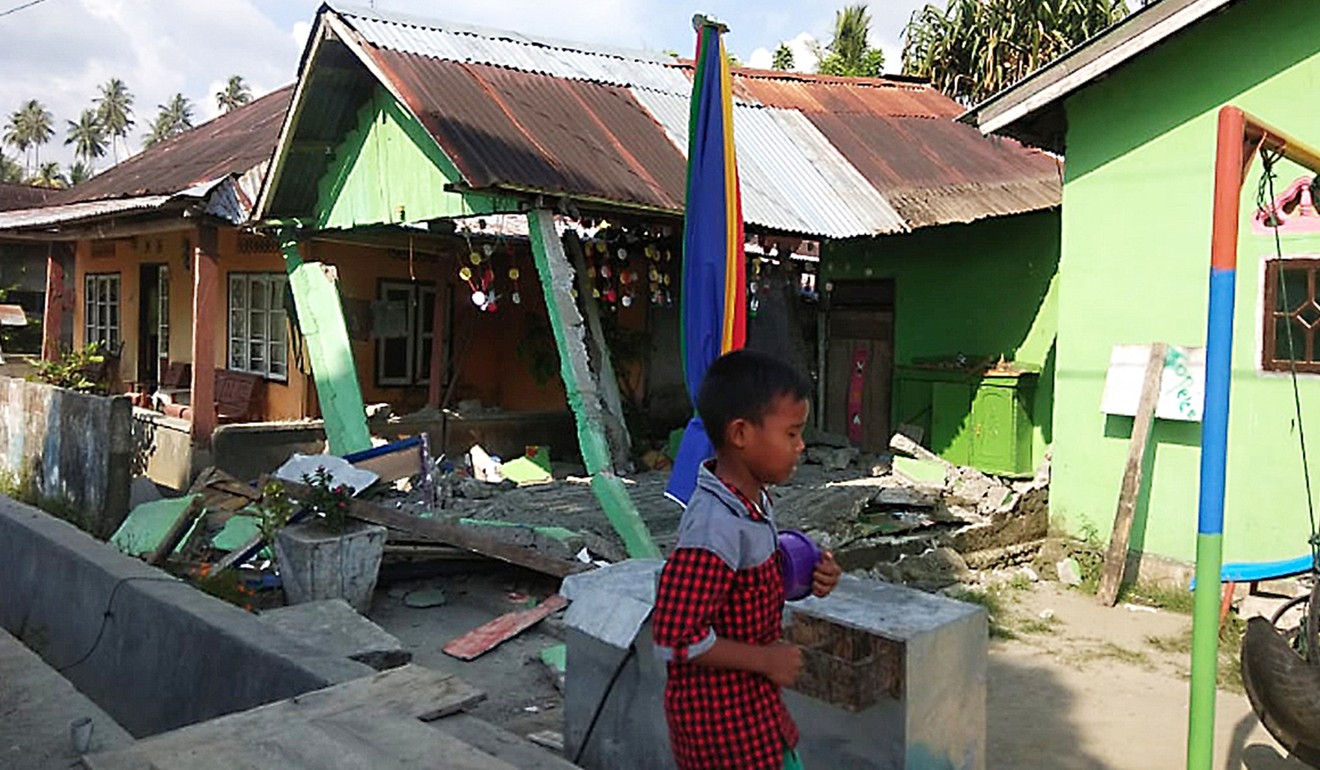
Hundreds dead, communities cut off and prisoners break free: Indonesia calls for help in quake-hit Sulawesi
The government expects the death toll to rise significantly with rescuers are yet to even reach the epicentre of the disaster
The Indonesian government on Monday called for international help to deal with the aftermath of a devastating series of earthquakes and a tsunami in the island region of Sulawesi that killed hundreds of people.
President Joko Widodo “authorised us to accept international help for urgent disaster-response” the government’s head of investment Tom Lembong said, as dozens of aid agencies and organisations lined up to provide life-saving assistance and the government struggled to come to terms with the sheer scale of the disaster.
Indonesia’s disaster agency said the death toll from the massive earthquake and tsunami stood at 844 at 3pm on Monday, with nearly 50,000 people displaced by the disaster. However, volunteers who compiled figures from local hospitals in Palu alone, said the toll was at least 1,193.

The disaster agency warned that the count could reach far higher once relief workers reached major towns such as Donggala, the epicentre of the quake, which has a population of around 300,000 and is normally a half-hour drive north of Palu.
“We haven’t received reports from the three other areas. Communication is still down, power is still out. We don’t know for sure what is the impact,” Sutopo Purwo Nugroho, a spokesman for the National Disaster Mitigation Agency, told a news conference.
Along with Palu, 1,500km (930 miles) northeast of Jakarta, these districts have a combined population of about 1.4 million.

Dozens of people were reported to be trapped in the rubble of several hotels and a mall in the city of Palu, which was hit by waves as high as six metres (20 feet) following the 7.5-magnitude earthquake that hit at dusk on Friday.
Hundreds more were feared buried in landslides that engulfed villages in surrounding areas.
Five foreigners – three French, one South Korean and one Malaysian – were among the missing, Nugroho said.
Adding to the chaos on Monday, the Indonesian government said as many as 1,200 inmates had escaped from three different detention facilities in the devastated region.
Ministry of Justice official Sri Puguh Utami said inmates had escaped from overcapacity facilities in Palu and Donggala.
“I’m sure they escaped because they feared they would be affected by the earthquake. This is for sure a matter of life and death for the prisoners,” she said.
President Widodo visited a housing complex, flattened when the quake liquefied the soil it stood on, on Sunday and called for patience.
“I know there are many problems that need to be solved in a short time, including communications,” he said.
The ruins would be rebuilt, Widodo said, as aftershocks continued to rattle the region.
Footage of the ruined Palu city showed a crumpled mess of houses, cars and trees mashed together by the quake, with rooftops and roads split and left at all angles.
We haven’t received reports from the three other areas. Communication is still down
“There are estimated to be many victims in this area. Evacuation is difficult because many collapsed houses are buried in soil,” Nugroho said on Sunday evening.
Internal Affairs Minister Tjahjo Kumolo, asked on social media about reports of looting, said he had ordered authorities to help people get food and drink and businesses would be compensated. One video posted on YouTube showed people grabbing boxes of supplies from a truck.
Television pictures showed scores of residents shouting “we’re hungry, we need food” as soldiers distributed rations from a truck in one neighbourhood, while footage from elsewhere showed people making off with clothes and other items from a wrecked mall.
State logistics agency chief Budi Waseso said it was preparing to send hundreds of tonnes of government rice stocks to areas in Central Sulawesi affected by the disaster.
Finance Minister Sri Mulyani Indrawati said the government had allocated 560 billion rupiah (US$37.58 million) for disaster recovery, media reported.

Indonesia, which sits on the seismically active Pacific Ring of Fire, is all too familiar with deadly earthquakes and tsunamis. In 2004, a quake off Sumatra island triggered a tsunami across the Indian Ocean that killed 226,000 people in 13 countries, including more than 120,000 in Indonesia.
Questions are sure to be asked why warning systems set up after that disaster appear to have failed on Friday. Nugroho, bemoaning a fall in funding, said none of Indonesia’s tsunami buoys, one type of instrument used to detect the waves, had been operating since 2012.
The meteorological and geophysics agency BMKG issued a tsunami warning after the quake but lifted it 34 minutes later, drawing criticism it had been too hasty. However, officials estimated the waves had hit while the warning was in force.
Neighbours including Australia, Thailand and China offered help and Pope Francis, speaking to thousands in St. Peter’s Square, said he was praying for the victims.
The European Union announced 1.5 million euros (US$1.74 million) in immediate aid.
Indonesia has the world’s largest Muslim population but also significant pockets of Christians, including on Sulawesi, which is one of the archipelago nation’s five main islands.
Associated Press, Reuters and Agence France-Presse
